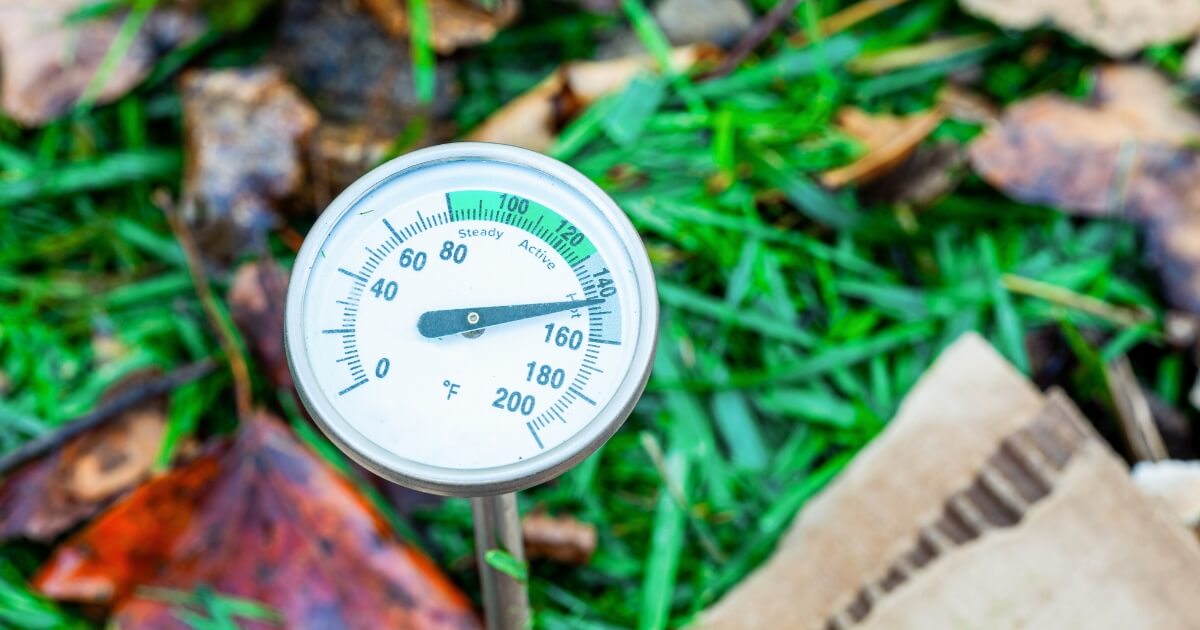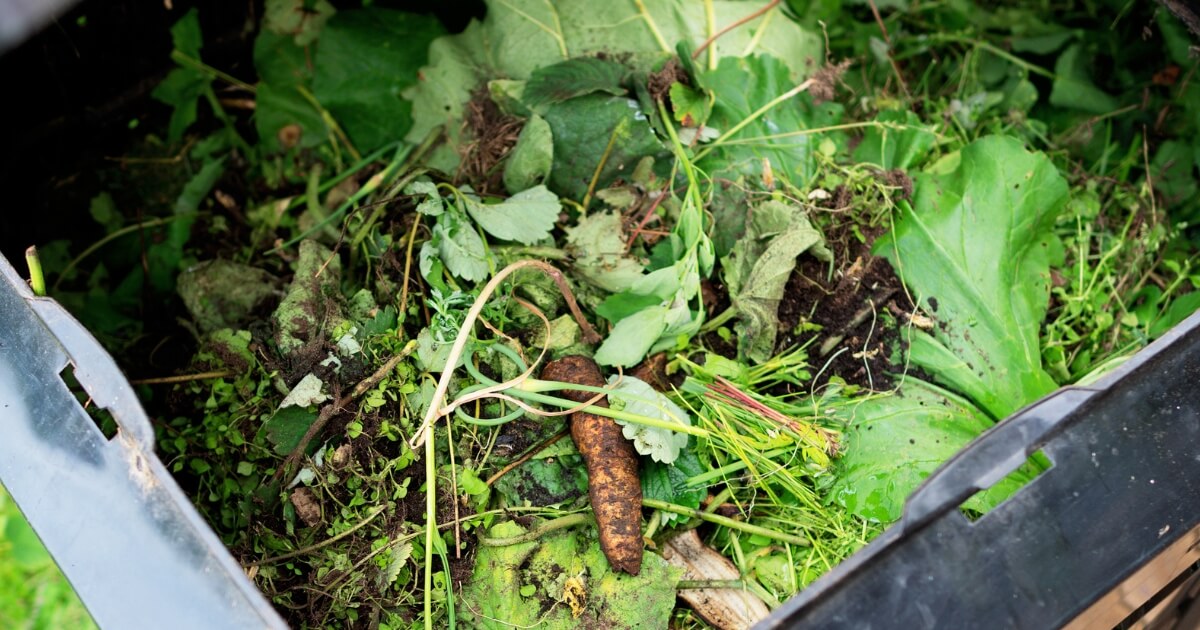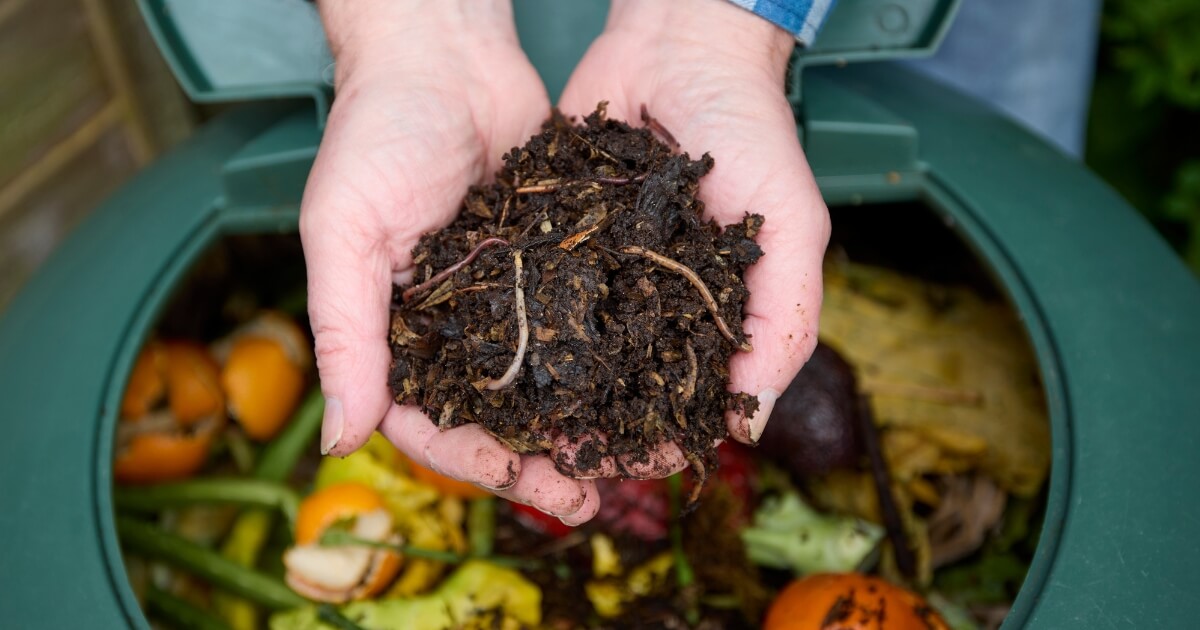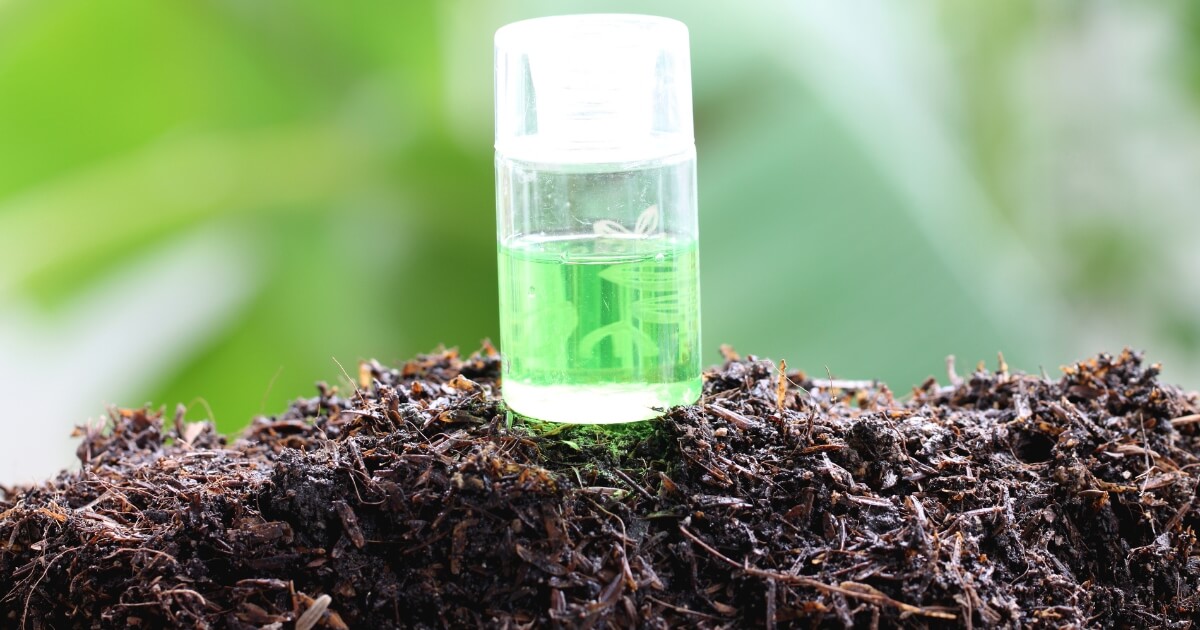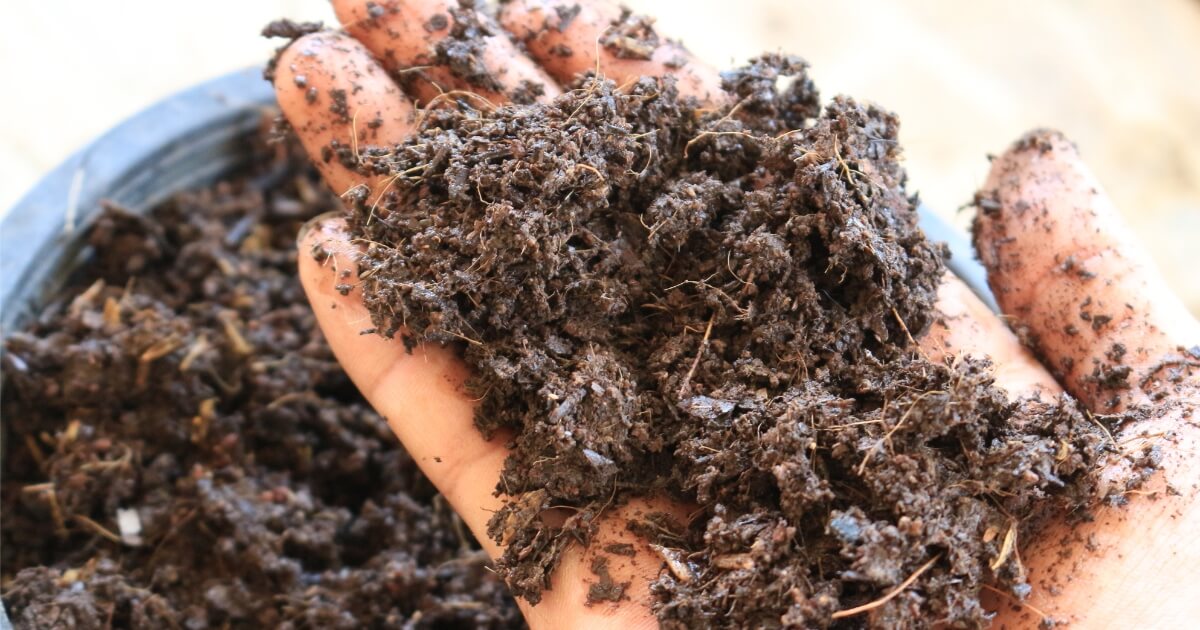Want to know which is better for large, healthy plants; compost, manure, or fertilizer?
The answer is all three have a place in a gardeners shed.
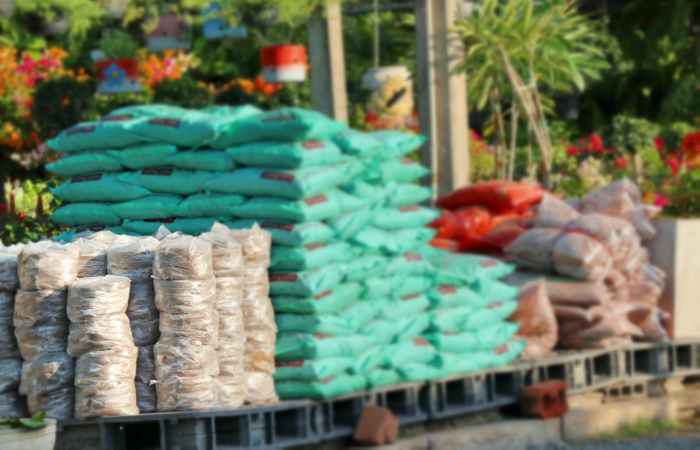
While compost and manure are a favorite for home gardeners since they are an organic material, there are times when fertilizer is a necessary component to strong plant growth.
I wrote this guide to help you understand the differences between compost, manure, and fertilizer.
Learn when to use these additives, things to avoid, and the best ways to incorporate them at home so you can choose the ideal combination for your needs.
Compost
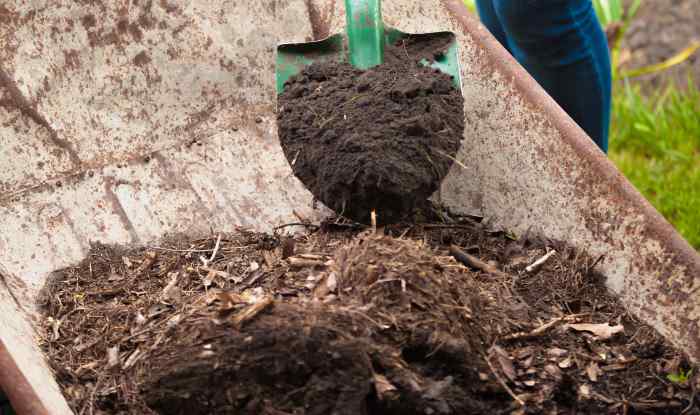
Compost has been in use since our earliest history, but many of us know little about proper use in the garden.
Where Does Compost Come From?
Compost is a mixture of decayed matter such as leaves, food scraps, grass, wood chips, or other organic material.
This mixture goes into a bin or pile until bacteria, heat, and other organisms break it down into a nutrient-rich medium.
How long does it take to compost? That depends, but usually between 6 months and 1 year in the best case scenario.
When To Use Compost
Spring’s an ideal time to use compost around your home for soil enrichment. Tilling the soil with compost acts as a natural fertilizer to increase plant vitality. Earthworms and good bacteria thrive in compost-enriched soil.
You can use compost during any season, even in cold weather, to improve soil quality. Compost helps keep plants healthy and resistant to pests or diseases by maintaining an optimal soil balance of:
- Moisture
- Air
- PH levels
- Microbes
- Nutrients
When To Avoid Compost
Every batch of compost delivers different amounts of nutrients. The chemical make-up may have high levels of salts or be too acidic and kill plants.
Never use compost where the soil is already moisture-laden, as it makes the issue worse.
Never use 100-percent compost as a growing medium when starting plants as the soil has poor aeration and retains too much moisture that stresses delicate root systems.
How Is Compost Best Used At Home?
It’s always smart to mix fresh compost with plain soil to mitigate plant damage. Compost releases its nutrients slowly over weeks and even months before it depletes its stores, which is great for busy homeowners.
I like to spread well-aged compost as a 3-inch mulch layer that delivers a steady amount of nutrients to the undersoil during watering or rains.
When establishing new plants, I add a shovelful of fresh compost to the dirt when digging holes, so the roots get a quick start. Here are our top picks for the best garden shovel to help heap your next compost dig.
Collect the liquid, known as “compost tea,” from the bottom of the bin and pour a bit around your indoor and outdoor plants for instant food.
Have an abundance of compost? Spread a thin layer across your lawn with a rake, then water it down. It disappears between the grass blades and provides a nutrient boost for a thick, green lawn.
Manure
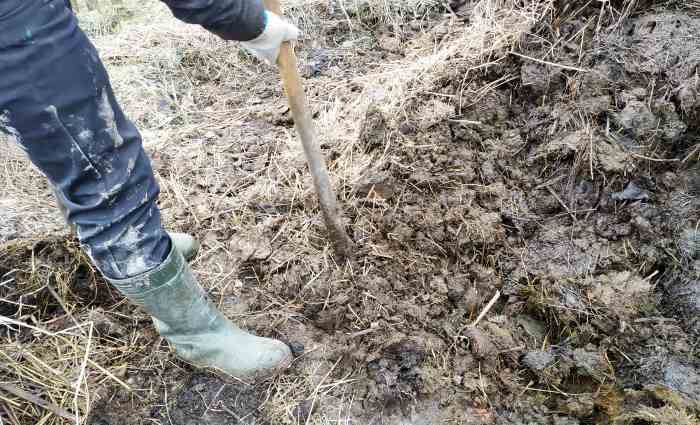
People have used manure for thousands of years to improve soil structure and to supply plants with essential food. Let’s look at how manure works for modern gardeners.
What Types Of Manure Can Be Used?
Not all manure works well for gardening. The following animals provide the best source:
- Chickens
- Rabbits
- Cows
- Sheep
- Horses
- Goats
The main focus is using manure from grass feeders, as waste from pigs, dogs, cats, or other carnivores host dangerous parasites that can be very harmful to humans.
Manure from rabbits, llamas or alpacas are weed-free and have a low-dose of nutrients that’s safe for most plants.
The word “manure” can refer to both liquid and solid waste from animals plus any material that captures this mixture like straw or sawdust.
When To Use Manure
You can use fresh manure as a direct fertilizer, but it works better to use it to condition the soil weeks or months before planting.
The longer manure sits in the ground, more decomposition and release of nutrients occurs while reducing any harmful bacteria and pathogens like Salmonella and E. Coli.
Always spread fresh manure in the fall for spring plants or early spring for summer or fall plants.
Wait several months after spreading manure to harvest fruits or vegetables safely.
Poultry manure tends to have a high salt content and needs about three to disperse before adding plants.
When To Avoid Manure
Avoid using manure from animals that are subject to growth hormones or eat from plants treated with herbicides as this passes through the waste and into your garden.
Directly using fresh manures can cause problems due to the very high concentration of nitrogen. Nitrogen aids in quick foliage growth but deters the creation of flower blooms or fruits.
Root crops like carrots, onions, and potatoes grow very poorly when exposed to fresh manure.
How Is Manure Best Used At Home?
There are guidelines for home use of any animal manure.
As a general rule, aged manure in bags for sale in home improvement stores and nurseries has already been broken down and is the easiest way to incorporate manure at home.
But many home gardeners have access to free, fresh manure. Use this manure to enhance sandy soil for better moisture retention or to loosen compacted earth.
You’ll lose significant amounts of ammonia/nitrogen in fresh manure into the air if you don’t till it six-inches deep into the soil within 12 hours of collection.
For safety from harmful pathogens, harvest above the ground crops 90 days after applying manure and harvest 120 days after for ground-contact or root crops.
Fertilizer
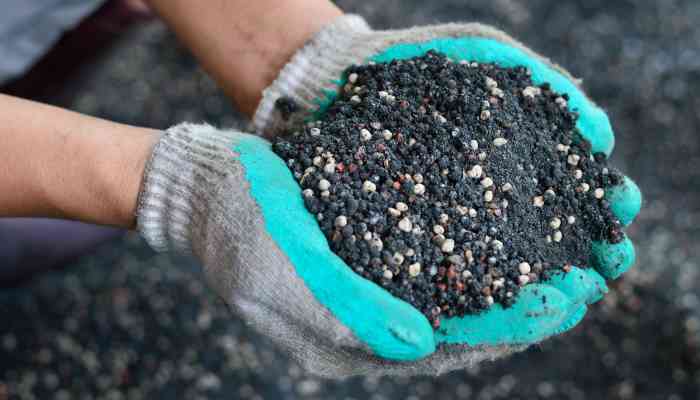
In recent history, fertilizers were found to significantly increase plant growth through the delivery of specific chemical nutrients to the soil and can work wonders for home gardeners.
Where Does Fertilizer Come From?
Fertilizer is made in a factory using concentrated synthetic chemicals and naturally occurring minerals like ammonium sulfate. Each batch has a consistent balance of nutrients.
The most common types of fertilizer come in a granulated or liquid form and contain nitrogen, potassium, and phosphorus (NPK).
Different substances like seaweed, bones, or guano make specific blends of fertilizer.
Related | Can You Compost Bones?
Chemically synthesized compounds made from things like ammonia, sulfur, nitric acid, and coal are also common ingredients.
When To Use Fertilizers
Fertilizers come in two varieties; fast and slow-release.
The “release” rate refers mainly to the nitrogen within the fertilizer. Fast-release fertilizer dissolves quickly in water, while slow-release uses a coating that gradually dissolves to disperse nutrients evenly over weeks or months.
Related | Milk As Fertilizer
Before you start summer plantings, till in a slow-release fertilizer for summer-long nutrient delivery. Some vegetables like tomatoes or corn demand a lot of nitrogen, so I like to use additional quick-release fertilizer every three weeks or so to keep them happy.
Spread slow-release fertilizer before the ground freezes in wintertime, so your first spring plantings have nutrients waiting to promote vibrant new growth.
When To Avoid Fertilizers
It’s never wise to use fertilizers near ponds, rivers, or other bodies of water since runoff can upset the ecosystem. Fertilizers could cause algae blooms or other pollution harmful to marine life and humans.
Long-term, excessive use of fertilizer could harm worms and other soil microbes, which in turn make the soil less healthy for any plant.
Avoid using fertilizer after the first frost of the year, since it stresses plants by causing fast growth at a time when it’s getting ready for dormancy.
Related | Does Fertilizer Go Bad?
How Is Fertilizer Best Used At Home?
For home use, fertilizers are ideal when you need to promote plant health or increase crop yield quickly. Always remember that a little fertilizer goes a long way.
By choosing a fertilizer specific to your plant’s needs, you can customize the treatment for the different shrubs, vegetables, flowers, or trees in your yard.
Use a watering can or hose sprayer attachment to spread liquid fertilizers about five inches from the base of your plants.
Use a hoe or tiller to work a granular fertilizer into the top few inches of your garden beds and a broadcast spreader for large areas like a lawn. Water the area thoroughly after application, so the fertilizer starts to dissolve and release nutrients.
Related | What Is A Rototiller?
In Summary
When the plants in your yard or garden are performing poorly, a nutrient deficiency is a likely cause. Using compost, manure, or fertilizer responsibly can all work to bring your plants back to optimal health.
I hope this article gives you a better understanding of the differences between natural soil enhancements like compost or manure and factory-made, concentrated fertilizers.
Applying the best nutrients delivered in the optimal form at the appropriate time is the key to healthy plants.
Using the guidelines above should assist you in deciding what combination of methods is best so your plants can thrive.
